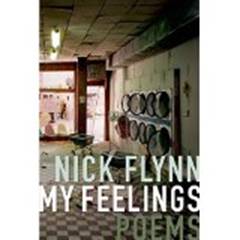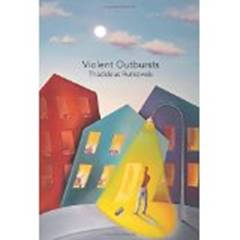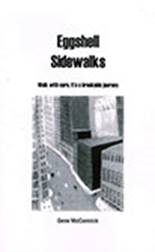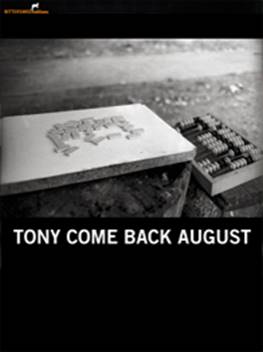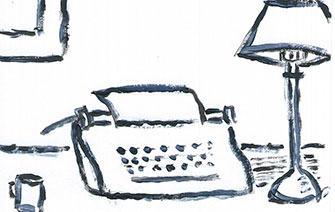 Books Received & Acknowledged
Books Received & Acknowledged
Kyle Laws, So Bright to Blind, Five Oaks Press.
We hold certain truths to be self-evident, but one which is rarely acknowledged, or discussed, and facts bear this out, Atomic testing is unsafe. Atomic energy is also unsafe, if only because of the waste products it produces, all of which remains harmful for half-lives of thousands of years. (Half-lives being the mid-point before the affected material begins to degrade.) As this is measured in thousands of years, it is a lifetime guarantee to remain harmful, as in the lifetime of the planet. Kyle Laws’ new book adds to the already formidable literature of the effect that atomic energy has upon the land and upon the people who live nearby testing sites or reactor meltdowns. Pictures of Chernobyl now bear this out, as the immediate area around the plant looks like a science fiction, post-apocalyptic, nightmare movie set. The horrible fact is only the fiction part does not apply. In the naïve, nascent days of the original open air, above ground testing, in the New Mexico desert, classrooms of children used to sit on ridges as far away as Utah to watch the blasts and to absorb the after effects of exposure to massive amounts of radiation. Terry Tempest Williams, anti- nuclear power advocate and demonstrator, has written eloquently about the personal aftermath of such exposure upon her family and herself; a family devastated by cancers that are now generally associated with radiation exposure. Kyle adds to this literature with personal observations of sites she has visited, the after-effects radiation exposure leaves behind. She notes the horrific consequences of filming a movie near one of those sites, probably the worst John Wayne movie ever made, “The Conqueror” where he plays, of all people, Genghis Khan, and how nearly three quarters of the cast died of cancer, many within a few years of wallowing in the radioactive sand and dirt on the set. To this day, she notes, Marie Curie’s papers cannot be handled without a protective suit and that her cookbook is radioactive giving new meaning to hot food. Irony abounds but none of it is funny. Fukashima is just the tip of a radioactive iceberg, when we consider how many nuclear plants are built on fault lines. Decommission the plants before it is too late! Kyle knows, and she eloquently expresses in this vital book, that we are all down winders now.
Russell Brickey, Atomic Atoll, Wild Leaf Press.
As luck would have it, the next poetry book on my reading pile, also deals with insane nuclear experiments, in particular, the testing of bombs on the Bikini Islands in the Pacific. This collection is a poetic symphony to the kind of brutish, arrogant ignorance of the people who have atomic toys and feel justified in using them just to see what they will do. There are echoes of Whitman, Berryman’s Dream Songs, The Book of Revelation, and any number of other reference points, and we are not only 14 pages into this substantial book. Brickey is a poet previously unknown to me, but I am convinced this guy can do it all. Besides knowing the canon, he has an almost inexhaustible knowledge of pop culture, in particular the disco era, which he evokes in ways both amusing and terrifying. The inevitable Godzilla references, manage to be both wry observations on how we trivialize the most important issues by making them tangible and slightly ridiculous, to poignant. If nothing else Brickey, sings the body atomic (an actual title of a poem) and we should all be listening. As with Kyle’s book, Brickey’s is a clear warning and brilliant exercise in poetic mastery. As the quote from the back of Atomic Atoll, by Bob Hope, of all people, says “As soon as the war ended, we located the one spot one earth that hadn’t been touched by war, and blew it to hell.
Linda Lerner, Yes, the Ducks Were Real, NYQ Press.
Linda’s book begins with an evocative, dire poem entitled, “The Girls From Hell Come to Collect”. The message is as portentous as it is clear: the past is now the present, and we can no longer escape the consequences of our lives; time to pay the piper. Lerner has to endure examinations of her body that feel like violations, because, well, they are. The body is an impersonal thing to the doctors, part of job, as opposed to something that has a mind. a sensibility, and a life of its own outside the office these examinations are conducted in. The passages where she describes these humiliations, and they are humiliations, are as vivid, as they are unforgettable. As well as undergoing physical examinations, the poet recalls her past, in particular her mother who is now ten years gone, and her late husband, with a longing that is neither sentimental nor idealized. To say that one poem in this vein is worth the price of the collection is both unfair to the poet and the collection, for this is a uniformly fine body of work, but the poem “Drives thru a Poem Like He’s Headed for That Cliff He’s Been Over”, recalls a visit to Hayden Carruth with her husband, is so outstanding that it must be signaled out. Even quoting from the poem, feels like an injustice as you need to read the whole piece to savor all the qualities it offers. A fine art cover by SharkArt (Angela Mark and Michael Shores) compliments this excellent collection.
Nick Flynn, My Feelings, Graywolf. .Flynn is best known for his memoirs, one of which was made into a movie, “Being Flynn”. The first Another Bullshit Night in Suck City, established Flynn as a man who is the sum of his dysfunctions: family, addictions, broken relationships, the usual, many might say. But what separates Flynn from the others, is his compassion for the disaffected, the victims of violence and of war, the downtrodden and the beaten down. Flynn’s third memoir, The Reenactments details, the almost stupefying experience, of watching your life- story enacted by others in the aforementioned “Being Flynn”. If Flynn was trying to put the demons to rest, this movie and the book about it made the task impossible. Hard enough to survive a broken family, his ne’re do well, to say the least , absentee father, who left Flynn family to fend for itself, the emotionally unstable but loving mother, who committed suicide, and the devastating effect the completely destruction of the family has on young Nick and his siblings. No wonder he was a drug abuser, an alcoholic, in and out of treatment, but still able to find his way into on the ground social work and his first love, the writing of poetry. One does not live on poetry alone, as Flynn would be the first to acknowledge but one does not necessarily have to abandon the horse that brought you to the dance and Flynn shows why he should continue writing his poetry. Late in my life, at a family retreat that included a daily writing workshop, I found myself breaking the cardinal rule I had laid down for myself: no more writing about my schizophrenic mother. So there I was, as I had years previously at Omega Institute, there, in a Sharon Olds workshop to work on something entirely different, bearing my exposed soul in the frankest, most personal way possible. At the conclusion of the former workshop, I said, “I thought I got over this. I guess you never do.” Flynn has not, nor will he ever, and why should he? It’s his life and I, for one, am glad he continues to glimpse inside the open door of it. Not to be missed in this collection an elegy, “The Day Lou Reed Died”
Edgar Cage, Cities Hidden by Rain, Rain Mountain.
This is a perplexing volume of mostly shorter, haiku style poems by a man who describes himself as a Buddhist architect. The best poems are wry, Zen like parables, short and meditative in the classic style. Others attempt too much, or are just not very good. Longer ones, and many of the attempts at humor, fall flat. I confess I do not share Cage’s Buddhist fondness for all living creatures, in particular, cockroaches, to which he devotes an inordinate amount of space. Ironically, these are some of the more successful humorous poems. We will agree to disagree on this topic. Still, despite my reservations, there is enough here to warrant a thoughtful reading by anyone who is fond of the haiku form.
Michael White, Vermeer in Hell, Persea Books,I read this in conjunction with his memoir, Travels in Vermeer. The two make a nice paring, with different takes on the same paintings often for completely different reasons. The memoir is concerned with the breakup of his second marriage, one that followed an earlier happy marriage that ended in his wife’s premature death. White misses his young daughter, by the second marriage, and wonders where it all went wrong. He immerses himself in a book project to view as many of the extant Vermeer’s in existence, combining an exegesis of the paintings, with personal reflection. The poetry follows a similar route but with important deviations. For instance, the final, long, title poem, revisits the horrific bombings of Dresden in terms, first of the “Girl Reading a Letter” and then through the life of a man who survived the bombing. The prologue, “Coup”, revisits scenes of lynching’s as public spectacles, a historical shaming of his current state of residence, North Carolina. Both poems are eloquent evocations of their subjects along with “Anne Frank’s Tree” make this an indispensible book. And then there are the Vermeers.
David Chorlton, A Field Guide to Fire, illustrated by Julie Comnick, Future Cycle Press.It is the rare book of poetry that combines insightful natural science and history, complimented by Art and verse. This remarkable book, the result of an intensive study of the kinds of wildfires that have ravaged the Southwest, in particular, Arizona. While some of these fires were controlled as part of the cycle of cleansing and rebirth of an area, most are devastating, some resulting in massive property damage and the loss of life. The cycle of wildfires has become unbalanced, not only in Arizona, but elsewhere, as part of the general change in climate that has resulted in uncommon drought seasons, that seem to be the norm rather than the exception. The future is bleak even as firefighters increase their suppression efforts, which have become inadequate to the task, due to the larger areas of dry land and vegetation which is, essentially, fuel for the fires. Anything can set one off, whether it be lightning or careless (and deliberate) human causes. There is no feasible way to prevent reoccurrences of an already dire situation. Chorlton brings his painterly eye to the landscape in flux, before, during, and after the fires. He focuses on the devastation to the land and to the habitat of native creatures, as only a naturalist painter can. There is not a forced, false note in this collection. The startling complimentary art work by Comnick was created using charcoal from burnt trees as the artist’s medium. What could be more appropriate than that?
Raymond Keen, Love Poems for Cannibals.
Perhaps, because I have been reading so many collected poems collections of late, I approached this book, with the most intriguing title of the year, as if it were a bringing together of poems from many works. Indeed, the book is laid out in eight thematic sections, each with an accompanying time frame to give the reader a sense of the time span of the work. When I mentioned to Mr. Keen that his book felt like a collected poems he said, “But it’s my first book.” Well, yes, but he later admitted that the poems were assembled over a period of years from notes, jottings, and scattered writings from some thirty years or more. While they may not have been published in collections, per se, they are a collected works of a lifetime. And there is much to admire here. The first section details some of Keen’s experiences in Vietnam that have the immediacy of firsthand experience. I was reminded of Michael Casey’s seminal Obscenities, at times, as Keen uses the vernacular of the time and an abundance of acronyms, which at times totally cofounded me without a glossary of terms. Still, on the whole, these poems resonate, capturing the war experiences for the reader. I was particularly drawn to the third section, “Mother Is On Vacation,” which had a heightened sense of surreality to it. The images are fraught with tension and a strange sense of imbalance. No one would confuse these with a Motel 6 commercial. Throughout Keen asks big questions and states that he makes no claims of revealing ultimate truths. Some work better than others, some are not as compelling as they might be, but all share a common sense of dignity and sincerity in their composition. The very fact that he chooses to write these poems, suggests he is seeking poetic truth. The second to last poem in this collection “17 Stanzas in Hard Prose to Commemorate the Horror of a Cross-Phyla Event in World War II, Passing from Father to Son” is such a poem. It transcends form and art, with a story that is literally, impossible to ignore, or to forget. The story is about a man’s experience as a Japanese prisoner of war that is the stuff of nightmares. It is a story that should be passed from generation to generation lest we forget that man is capable of anything; unthinkable acts beyond cruelty, in a time of war where there are no constraints. He should be thanked for retelling it, even if it gives us nightmares.
Joan Colby, Ribcage, Glass Lyre Press, winner of 2015 Kithara Book Prize.
Joan Colby poses the classic question that the mind/soul, is the prisoner of the body, through a series of poems that is often as astonishing, as they are revealing. Treating each body part as an object in and of itself, Colby personifies, anthropomorphizes, and rhapsodizes. Poems can be witty, as in the catalogue of the attributes of lips or the aspects of legs and kidney as punctuation marks. She relates ways in which she abused, broke, or in other ways damaged, body parts, and how, with age, they begin to fail, affect how the world is perceived. Inside us exists a whole cosmos, a veritable universe, of being that transcends the cage and becomes myth. Disease is evoked in the understated, elegiac “Coughing Up Roses”. The horrors of Whitman’s Civil War, where the limbs are piled besides the surgeon’s tent, are described in “Fit and Nervy. A logical extension of the removed body, leads us to the “Envelope of Servitude”, a litany on feet, noting that half the soldiers of the Civil War went barefoot into battle, an evocation that lead to the Chinese notion of foot binding, and later to, Byron’s club foot, and Achilles’ heel. This process of linkage, through connection of images centering upon a body part, is the key element of this ingenious grouping of poems. The second section continues the process in “The Mind at Play.” Here, if possible, the poet is even more free range, more exterior, in her focus tracing the unlimited boundaries of the imagination. Colby finds universe, within and without, and then is compelled to let it go, to disintegrate as all things must. Her brilliant poem, “Passwords” concludes,
…..I recall how my father in the years
Before he died, also became obsessed by the vast
Expanse of space, galaxies, quarks, darkMatter. How he pondered the password
To the panorama of stardust to which he’d soon
Be returning. His identity, at last, stolen.I am continually amazed by the brilliant, far reaching work of Joan Colby and I don’t know why I should be. It’s just business as usual for this poet.
Janine Pommy Vega, Walking Woman with the Tambourine, Longhouse.As befitting a posthumous collection, left for her literary executor, Bob Arnold at Longhouse, this is an elegiac collection. Beset with debilitating illness, the deaths of siblings, friends and colleagues, Pommy Vega memorializes as she mourns. But this is not a depressing book, as Pommy Vega retains and active social conscious, the will to remember, and to live and an unbending love of life as the title poem, one of resurrection and of joy, shows. There is an even a pre-elegy for a mancoon cat, lulu that celebrates an irrepressible animal’s unflappable joi de vivre. As with his Corman Volume and Niedecker pamphlet reprint, Arnold as fulfilled his role of literary executor by producing an essential work for admirers of a poet’s life work, in this case, her final one.
Stuart Bartow, Einstein’s Lawn, Dos Madres Press.
I can’t recall when I last enjoyed a book of poetry s much as this one. Bartow’s range in this collection is astonishing, showing an eclectic. mind venerating, Einstein and Zombie flicks, with equal aplomb. There is even a formal poem on this subject, “Zombie Sestina”, which will satisfy lovers of the form, and the subject. His poem celebrating the imagined novels of the deceased in childhood Bronte sisters, is simply inspired, as is his “The Horror Novel I Will Never Write.” Appropriately, it is Einstein’s life and work which provides the unifying element to the collection. We see Einstein helping a neighbor’s child with her math homework which he compares to having Bach as a music tutor or Michelangelo as an art instructor, The poem that most affected me was “Einstein’s Desk” which describes a work place like mine (and Stuart’s if he is to be believed and I see no reason why he shouldn’t be) that ends,
……..Alas the panic of my desk,
like Einstein’s, books, notes, papers in piles.Let there be lost equations and a mess
of unfinished poems amidst the madness
that makes figures in the mist appear
and vanish in the random wind and rain.Alan Casline, 64 Changes, Foothills Publications.
The author advises the reader that the best way to read this book is randomly, that is choosing poems that appeal to you, perhaps, by title, or by whatever suits, and read on in small bites. Of course, you can read sequentially, most are dated by month, day, and year, but do not appear chronologically. Casline also takes pains to point out that each poem is part of a hexagram pattern; hence their randomness and their structure. Choose your own principle. Being something of a poetic traditionalist, I read the book in the sequence offered, though in small groups of roughly twelve at a go, then, read it backwards, the same way though in a slightly larger chunks. I intend to become more hexagrammatically informed and will read the book again.
64 Changes is a life work, written over a period of close to forty years. These are spare, ruminative, imagistic poems, firmly rooted in the natural world, but with universal implication of the spiritual kind. Many recall Asian landscape painting with simple lines of striking imagery of man in nature. The poet I was most reminded of was Cid Corman though any number of eastern influenced poets could be evoked, from Snyder to Whalen to Kerouac, among many others. Much as Casline embodies the randomness of the universe, there is a strong sense of humanity and community, as he celebrates evenings with fellow, like minded friends, as much as he does the beautiful contradictions of existence. As with all Foothills books, 64 Changes is book making at its finest and is work of art in itself fully complimenting this poet’s quest for understanding life and all of its attendant beauty.
Thaddeus Rutkowski, Violent Outbursts, Spuyten Duyvil.I first came across the work of Thaddeus Rutkowski in the eighties. We were both publishing in an obscure magazine called DSA which was the journal of a press working under the name UBP. I use the initials, because the actual name of the journal and the press are somewhat embarrassing among respectable folk. DSA stands for Driver’s Side Airbag and UBP, not a university press, as one editor suggested it could be when I was reprinting pieces, but Undulating Bedsheet Press. I think Thad would agree, I missed a wonderful opportunity to create a new kind of university press.
You might ask, why is this anecdote germane to the volume in question? To me it shows the kind of sense of humor Rutkowski has, and his deadpan, matter of fact style of writing that posits a situation, expands upon it, and arrives at some totally unexpected place in the end. I characterize this kind of writing as the rolling stone theory: accumulating images careening downhill until they smack hard against an immovable object, resulting in an explosion of epiphanies. Or something akin to that.
Are these short flash fictions poetry, is a valid question? Well they could be, in the way Lydia Davis’s short paragraphs are, though she claimed she did not write poetry; was clearly not a poet. Those were the days before she published a chapbook of poetry that often feels like prose with its strict narrative line. Thad also published a book of poetry which seem, in retrospect, to have elements of the prose poem in them, though the lineation is different. Certainly all of his major themes are present: The menacing, often drunk, somewhat goofy Dad, the recalcitrant, submissive Mom, and the narrator, an often confused, hapless, young man struggling with a mixed ethnic heritage; half-Polish, half Chinese.
Maybe a more appropriate analogy for Violent Outbursts than Davis is: Rutkowski’s pieces are to prose poems, what Russell Edson’s are to fiction. Thad’s work has many of the same elements of Edson’s best work: absurd, outrageous situations, and resolutions, deft biting satirical humor, and a mock, generally, self-effacing narrator. I have attended seminars, read anthologies, whole books on the subject of what makes a prose poem and I learned one thing no one knows. So go with flash fictions. It works as well as any other designation does. This is good highly charges, terrific, distinctive writing no matter what you call it. All hail Rutkowski!
Gene McCormick, Eggshell Sidewalks.Gene’s latest self-illustrated chapbook of poetry, comes with the admonition, “Walk with care, it’s a breakable journey.” You can almost hear an alto sax playing the blues in the background, see the shadows of, lit-by candles, beat cafés, where a sultry blonde, and the most recent winner of a Humphrey Bogart lookalike contest, are sitting discussing her case, which, no doubt, involves: betrayal, sex, money, and death. The association with 50’s noir is both intentional and directional: the characters are familiar, but not stock, their words crisp and pointed, double edged, and deep cutting. This spare, lovely book, is divided into thirty related sections, which could be read as a movie script (my preferred choice), a novella, or a sequence of poems. Many of these pieces are reworked poems that have appeared in small press magazines over the years, and lose nothing of their original impact, transferred and retooled as they are here. In fact, I would suggest they are magnified. If you are looking for an introductory look into the world of Gene McCormick, poet and artist, this is a good place to begin. You will be back for more.
DB Cox, Low Blue Notes, Underground Voices, Kindle book.Cox’s poems fit well in the format on your reader, as his lines are generally short, pack a punch, and have an appropriately bluesy beat. Cox explores three closely related themes in this tight, highly readable account of his life that often takes to the road. As you might expect, there are barrooms and clubs, itinerant musicians, and a tough life befitting a Viet Nam vet who found life after war both unsettling and unsatisfying. Being rooted to one place doesn’t suit this rambling man, and his restless spirit seeks solace in beer, babes and booze. While the themes may seem overly familiar, and well-worn, what distinguishes Cox from the hordes of road/bar type poets, is his craft: these are well honed, spare, carefully considered pieces that never miss a beat. Low Blue Notes is available at an affordable price, in an easily obtainable format, which can be viewed online with a free Amazon app, if you do not have a kindle reader. Do it.
A word on reading poetry in a kindle, and other online reader formats. I still prefer a paper format for poetry, in particular. Yet a poet like Cox and others, like Colby and Lockie and The Queen of the Small Presses (you all know who She is), are all easy to read, and do not lose anything in this format. Do not attempt to read Whitman or C.K. Williams on your kindle. Furthermore these kinds of editions are often the only affordable and convenient way to view books as libraries have cut back on their hard copy purchases and book stores either refuse to carry poetry, or stick to a few well know, popular titles that may, or may not, even be classified as “real poetry”. Presses like Future Cycle Press offer deep discounts of already inexpensive volumes on weekends which are well worth delving into for the reader who actually enjoys reading poetry as I do. Check them out also.
Tony Comes Back August, text by Tony Gloeggler, photos by Marco North , Bittersweet Editions.If you like no bullshit, straight up, well written, affecting narrative poetry as I do , you can never go wrong with a book by Tony Gloeggler. He has spent his working life caring for adults with severe emotional disabilities, a fact that is often a subject in his poems. The unusual title, Tony Come Back August, is a phrase spoken by one young adult with whom Tony has formed a special relationship, one as close as a father to a son. The young man is the child of a former girlfriend, who Tony continues to see now, despite Tony’s often incapacitating illnesses, in another state, long after the relationship with the mother has ended.
It is a rare poet who can capture the dichotomous nature of his role in their relationship and the strain of maintaining it. There is the omnipresent pain of knowing the manchild will always be limited by his autism and stuck in a strange world no one can completely penetrate; a difficult reality the poet handles without resorting to sentiment or pathos. Further, there is always the uncertainty of not knowing what the boy understands and how much he will remember; that time will dull the closeness in ways that cannot be breached. Complicating everything is that their relationship is one of physical separation. There is a world of hurt in these poems, but also a complex sense of humor, sometimes in the same sentence, that few poets have the craft to sustain. Gloeggler’s poems strain against the deeply felt emotions, presented in a straightforward way, without undue judgment or commentary. The poems speak for themselves: what you see and what you get. Tony Come Back August is a rare book by anyone’s estimation.
It should be noted that Bittersweet Editions is the perfect designation for the work presented here. And that the publisher, Marco North, has contributed an extensive collection of street scenes: of places, people and things, that functions as a volume within a volume. I wouldn’t call this fine black and white photos a commentary on Tony’s poems, as much as a parallel world, with a distinct flavor of their own; an essay in images. This substantial book is priced at less than ten bucks and has twice the weight in content of more commercial books, at many times the price.John Bennett, Death by Airbag, Pedestrian Press.
I wanted to squeeze in this late arrival as this is the latest collection of Bennett’s ongoing, epic project of Shards. What s a shard? Well, it is whatever Bennett wants it to be but, mostly, they seem to be as short as a five line poem to a few pages of prose poetry. Clear enough? (note John writes the best response to his shards: “they aren’t very facebooky”. No shit, Sherlock! And thank god for that) No well, tough. What really matters is the content and Bennett is spot on in his wry, caustic often vitriolic observations o the human condition and the depressing times we live in. Bennett finds these times depressing because of the general lack of values, in particular a decline in the sense of human dignity and of what is right or wrong? There are no real boundaries anymore and whatever I feel like doing is okay because prosaic, archaic stuff like laws and respect for people and property are considered a violation of personal freedom. It’s fascinating that so called constitutionalist tea banger, gun nuts are the worst violators of these basic codes and fail to see the obvious: without laws of human conduct, (or picking and choosing which ones we will obey, which is, basically, the same thing as having no laws) this expanded sense of whatever I want to do is okay, is anarchy. So, Bennett’s observation that society is falling apart around us seems not only correct but inevitable. It’s not all doom and gloom. Two poems had me laughing until tears came: the title poem and “The Way We Were.” Support the poet, the small presses. Buy John’s book.
Received the following publications which may be single issues of a magazine but have the heft of an anthology:
Big Hammer #18
Lummox #4
The Great American Poetry Show #3
Big Scream #53Almost forgot, Don Winter sent us the most recent and all too rare collection of his poems Don’t Kid Yourself from Working Stiff Press. The name of the press says it all but the cover photo is priceless and Must be seen.
